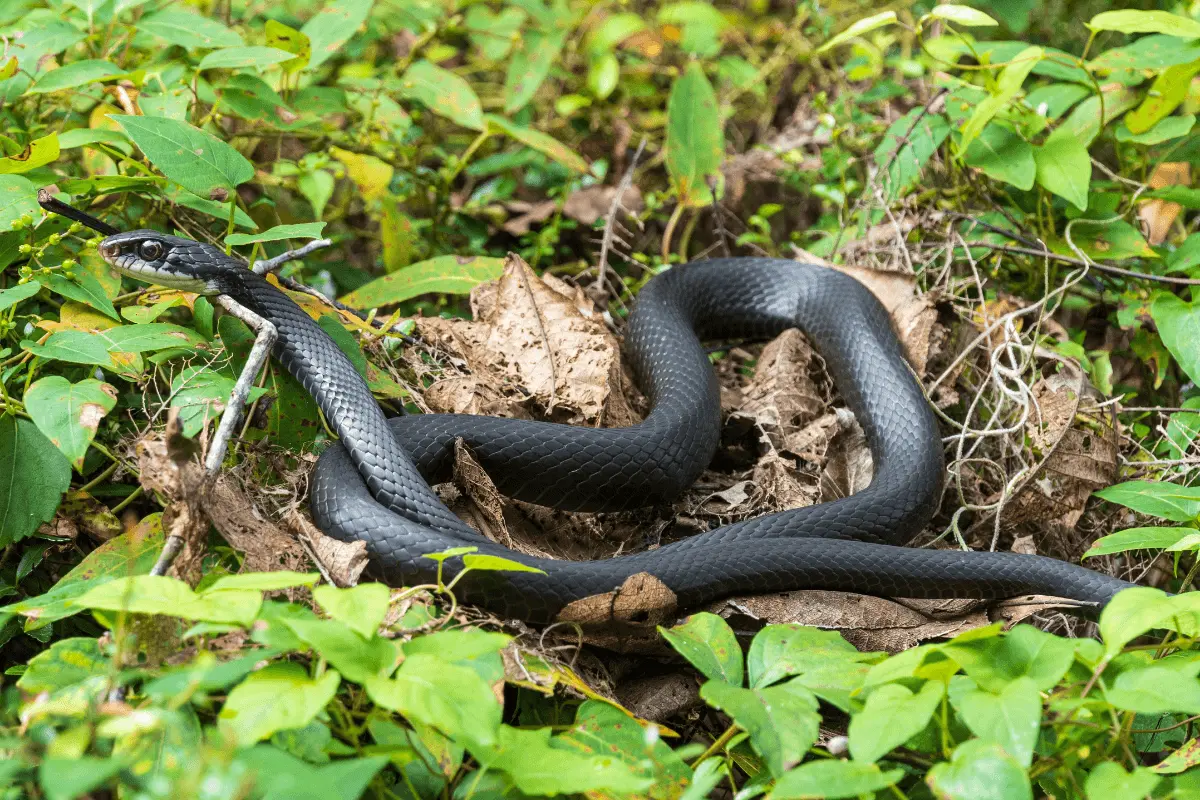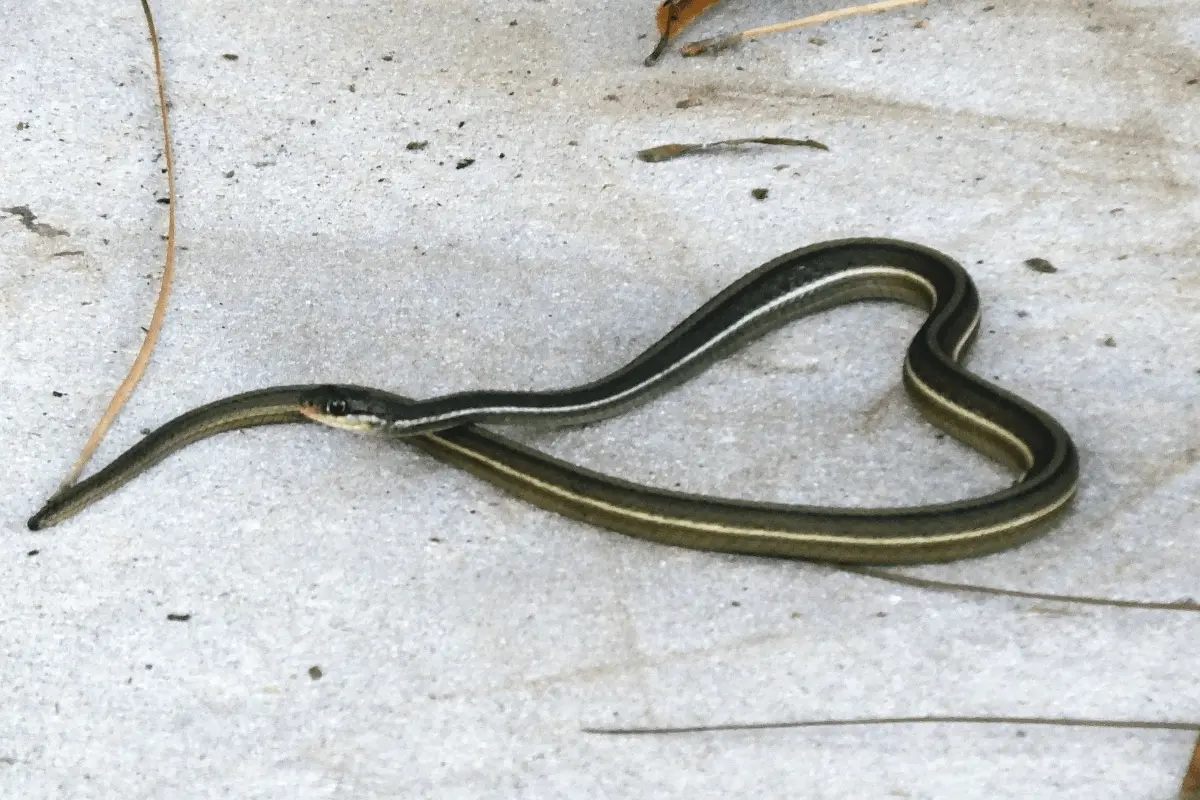You’ve come to the right place if you’ve ever been attracted by the many different diets of animals in the wild. In this article, we explore snake diets, focusing on the question: Do snakes eat grasshoppers?
Yes, grasshoppers are part of the different diets of many snake species, including the harmless Garter snake and the dangerous Eastern brown snake. Especially for young snakes, these insects provide readily available and nutrient-dense food.
Join me as we explore this interesting subject and uncover the beauty of nature’s beautiful layout in its many forms. Learn more about these amazing creatures and fulfill your curious mind.
Grasshoppers and Their Role In The Animal Kingdom

According to the book Animal Life and Intelligence By C. Lloyd Morgan grasshoppers, the rhythmic singers of summer fields, play an interesting role in the animal world. They play an important part in the food web as total herbivores.
Their high-energy diet of leafy greens fuels the animals that feed on them. Birds, lizards, spiders, mice, and snakes are just a few of the many species that eat grasshoppers. Grasshopper droppings aid in the recycling of nutrients back into the soil, which in turn benefits plant growth.
Grasshoppers are important for more than just their place in the food chain. In different cultures, their jumps and chirps, made possible by their strong back legs and organs that sound like tymbals, have been seen as signs of fertility and life. Their actions, like gathering like locusts, are important signs of environmental changes because they are bio-indicators of ecological health and balance.
The Natural Habitats Of Snakes
According to the European Journal of Wildlife Research snakes are the quiet who live in the undergrowth and live in a wide range of places. From the dry sands of deserts to the green canopy of rainforests, from the freezing tundra to temperate deciduous woods, snakes have shown that they can live in a wide range of environments. With heat-sensitive openings or good senses of smell, they move through their surroundings with skill, looking for food and avoiding danger.
They maintain ecological equilibrium by playing both predator and prey roles. They serve as a food supply for larger predators while also contributing to the stability of the rodent population. Their venom, which is a deadly compound in the animal world, is a great example of how creative evolution can be and could be a source of strong medicines.
As a result, snakes serve as a model for the complex web of relationships that affect the animal kingdom and highlight the value of every living thing in the grand scheme of things.
Factors Influencing A Snake’s Diet
Size And Species Of The Snake
In the quiet and winding world of snakes, the size and type of the snake have a big impact on what it likes to eat. Threadsnakes and other tiny snakes may live off tiny prey like ant larvae. In contrast, huge constrictors like the Green Anaconda have such incredible power that they can kill and eat large animals like deer and capybaras.
However, a snake’s diet is not determined simply by its size; the species also plays a significant role. The King Cobra is one of those that has a special taste for other snakes, a behavior known as ophiophagy. Sea snakes are well-adapted to their aquatic habitat, where they prey on fish and even eel.
Meanwhile, the Emerald Tree Boa hunts birds and small mammals from its perch in the treetops. Therefore, each snake is an individual in the ecological puzzle due to its size and species.
Availability Of Prey
Snakes’ eating habits are like the complex composition of an opera, with the availability of prey acting as the conductor. There are many food sources in a snake’s natural environment. Still, these resources are only sometimes readily available due to seasonal and climatic shifts. For instance, rat snakes profit from the increase in rodent populations in agricultural fields during the harvest season. But when times are hard, they have to change and add to what they eat or fast.
It’s worth noting that a snake’s feeding habits could shift over time as a result of changes in its environment. Some species are extremely adaptable, eating almost anything they can get their hands on. Others may relocate to locations where food is more plentiful. This shows how well snakes have evolved and how important they are to maintaining balance in their own environments.
Reason Why Snakes Eat Grasshoppers
Energetic Efficiency: snakes can find grasshoppers in large numbers and trap them. Using them is a practical decision that ensures success in an evolving world.
Prey Availability: Grasshoppers make up a sizable portion of the available plant and animal life in some ecosystems. This means snakes may easily be included in their diet because they are a readily available food source.
Dietary Diversity: Grasshoppers are just one item on the wide range of choices that many snake species like. This makes it easier for snakes to adapt to changes in their prey groups.
Predatory Adaptation: Snakes are able to swallow things larger than their head thanks to their flexible jaws, which have evolved as a predatory adaptation. Grasshoppers are easy prey because of their small and lack of offensive capabilities.
Nutrient Needs: Because grasshoppers are high in proteins and fats, they help snakes get the nutrients they need to grow, reproduce, and stay healthy.
Ecological Role: Snakes play an important ecological role because they help control grasshopper numbers, which helps keep vegetation from being overgrazed.
Snake Species That Eat Grasshoppers
As Grasshoppers are small insects, they are eaten by small to medium snake species. I’ve listed and discussed species that eat grasshoppers.
Garter Snakes (Thamnophis sirtalis)

The food of the Garter Snake is a perfect example of its history as an adaptable predator. This snake eats a wide variety of things, from amphibians and rodents to grasshoppers. Mostly found in the Americas, this species can be identified by its characteristic longitudinal stripes.
By eating grasshoppers, garter snakes help keep their numbers down, which reduces the risk of damage to crops and gardens. In addition, by turning the energy they get from grasshoppers into their own predatory energy, these snakes serve as an example of interdependence among ecosystems.
Eastern Brown Snake (Pseudonaja textilis)

The Eastern Brown Snake of Australia is known as one of the most poisonous snakes in the world. It uses its powerful venom to paralyze a wide range of food. It primarily consumes larger prey like mice and rats, although as a youngster it will not turn down smaller prey like grasshoppers.
These snakes have the flexibility they need to live in their dry environments, where the amount of food available can change a lot. This snake’s ability to prey on grasshoppers indicates its position as an ecological regulator and its evolutionary success.
Corn Snake (Pantherophis guttatus):

The Corn Snake, a native of the southeastern United States, is a popular pet due to its calm nature and eye-catching symbols. This constrictor prefers rodents as its primary prey, but it may eat grasshoppers if necessary. The Corn Snake’s diet of grasshoppers lets it adapt to a wide range of environments, from brushy clearings to open fields. The snake’s ability to use this adaptation to its advantage highlights the importance of snakes as both predators and consumers.
Smooth Green Snake (Opheodrys vernalis)

The Smooth Green Snake, found in the leafy regions of the northern United States and southern Canada, is the ideal insectivorous reptile. This slim, bright-green snake mostly eats arthropods, such as spiders, beetles, and grasshoppers. They survive in grasslands, wetlands, and meadows because of the abundance of such prey.
Particularly beneficial to the snake’s growth and energy needs, grasshoppers provide an easily obtained and nutrient-rich food. The fact that the Smooth Green Snake eats grasshoppers shows how everything is linked in the ecosystem and how delicate the balance between predators and prey is.
King Brown Snake (Pseudechis australis)

The King Brown Snake, also known as the Mulga Snake, is common in the dry parts of Australia. Animals as diverse as rodents, birds, reptiles, and arthropods like grasshoppers make up the diet of these huge, deadly snakes. Snakes, especially baby snakes, often eat grasshoppers since they are a common and easy-to-catch food source. This feeding strategy shows the snake’s adaptability and the vital role it plays in protecting ecological balance.
Eastern Ribbon Snake (Thamnophis sauritus)

The Eastern Ribbon Snake is a relative of the garter snake that is found throughout North America but is most commonly seen in wetlands and marshy regions. It eats mostly fish and amphibians, although it won’t turn down a supper of grasshoppers if offered.
This addition to its diet helps meet its nutritional needs and prepares it for effective use in a wide range of habitat types. The fact that the Eastern Ribbon Snake eats grasshoppers shows how important it is to the web of life.
Southern Black Racer (Coluber constrictor priapus)

The Southern Black Racer, native to the whole southeastern United States, is a quick, alert, and adaptable hunter. It eats rats, frogs, and lizards as adults but grasshoppers and other insects as young.
It’s ability to adapt to new environments by eating whatever is around is a key factor in its survival. The Southern Black Racer helps control pests by reducing the amount of grasshoppers, especially in suburban and farming areas
Northwestern Garter Snake (Thamnophis ordinoides)

Western North American garter snakes eat anything from slugs and worms to amphibians and even grasshoppers when they can get their hands on them. It is well-adapted to both terrestrial and arboreal habitats, where it preys on grasshopper populations. This shows how flexible and durable the Northwestern Garter Snake is, as it helps keep ecosystems in order by eating different things.
Eastern Coral Snake (Micrurus fulvius)

Red, yellow, and black bands make Eastern Coral Snakes one of the most recognized snakes in North America. In addition to tiny vertebrates like lizards and snakes, baby coral snakes will eat invertebrates like grasshoppers.
Their ability to eat different kinds of food helps them survive in settings where food isn’t always available. It also shows the complex web of relationships between predators and prey that keeps their ecosystems healthy.
Conclusion
In the complex web of life, snakes do eat grasshoppers, with eating habits influenced by factors such as the snake’s size, species, and environment. Snakes, especially younger or smaller snakes, rely on grasshoppers as a primary source of protein. Furthermore, snakes eating grasshoppers is an example of how different species depend on one another to keep ecological equilibrium.
So while the answer to “Do snakes eat grasshoppers?” is yes, the story behind this relationship is much more complex, involving ecological interdependence and the interesting nature of wildlife feeding patterns.
FAQs
References
Graitson, E., Ursenbacher, S. & Lourdais, O. Snake conservation in anthropized landscapes: considering artificial habitats and questioning management of semi-natural habitats. Eur J Wildl Res 66, 39 (2020). https://doi.org/10.1007/s10344-020-01373-2
